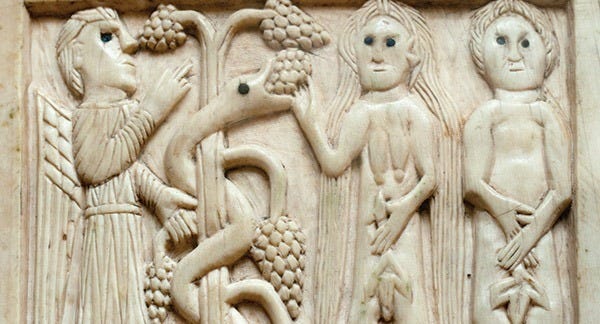I have two oak trees outside my window that are apparently over two hundred years old, though they don’t look a day over a hundred. Back when I was in day school, the older students would set up a shuk in the gym on Tu BiShvat and we’d wander around collecting the treats of the day. I never particularly enjoyed the dried fruit and nuts, let alone the inedible carob, but there were usually some dried apples that tasted close enough to candy to be tempting.
Did the serpent, in turn, tempt Adam and Eve with an apple? The identity of the forbidden fruit is an old exegetical mystery—the Bible only calls it peri (fruit)—and commentators have floated many theories over the centuries, an apple being among the least plausible. The book of Enoch described the Tree of Knowledge as “in height like the fir, with leaves like (those of) the Carob tree: and its fruit is like the clusters of the vine.” In Legends of the Jews, Louis Ginzberg says that grapes are an old suggestion. After all, when fermented they become the “beverage of the gods,” and a frequent fuel for human temptation. Still, the tree at the center of the garden could have been anything from a wheat stalk to a nut tree (apparently signifying a sexual awakening), or even—my personal favorite—a banana tree (which isn’t actually a tree).

A few years ago JRB contributor Azzan Yadin-Israel published Temptation Transformed: the Story of how the Forbidden Fruit became an Apple and Philip Getz wrote a terrific review for us: come for the history of the Cosmic Crisp apple, stay for the unique morphology of fig leaves (not to speak of the puns).
Happy Tu BiShvat!
This is a free Substack newsletter. Share it with friends and don't miss out on our full quarterly magazine.





I always thought it was a pomegranate-- at least in part because of its many seeds which are sexually suggestive......
Everyone knows it was a pomegranate tree.